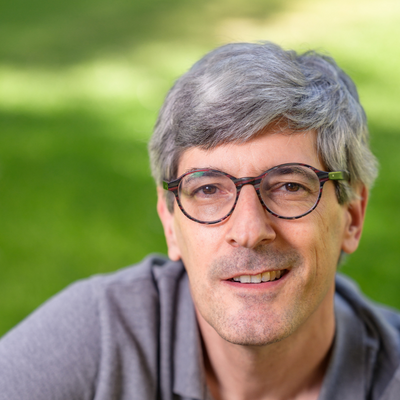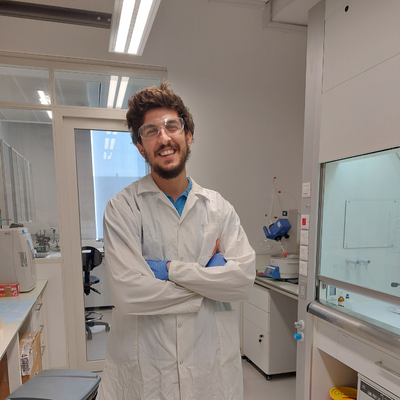Creating new materials and speeding up reactions is what they do. Sounds a bit mundane, no? It is anything but. Materials that catalyze faster can be used in a wide range of fields from pharmaceuticals to future Mars habitats.
Now, BGU chemists have come together to combine their expertise and produce new responsive polymers.
Their findings were just published in Nature Chemistry.
Prof. Yossi Weizmann makes gold nanoparticles that convert light into heat. Prof. Gabi Lemcoff makes latent catalysts that need to be triggered. The two, as well as MSc student Nir Lemcoff, put their heads together and spent two years developing a new kind of polymer and a more efficient and environmentally friendly way to make chemical reactions happen.
%20(3).png)


Above:
Top: Prof. Yossi Weizmann (Photo Credit Zuckerman Foundation)
Middle: Prof. Gabriel Lemcoff (Photo Credit: Dani Machlis/BGU)
Bottom: Nir Lemcoff (Photo Credit: Courtesy)
"If you add my gold nanoparticles into the liquid solution with Prof. Lemcoff's latent catalysts, then the heat that they generate triggers the catalysts turning the liquid into a solid. That solid quickly heats up when exposed to LED light," explains Prof. Weizmann.
The solid polymer is flexible when made with UV light, but also hardens when exposed to IR light (see the video links below).
"We were surprised that the polymers responded to light," says Prof. Lemcoff.
"I conducted the same experiment 1,000 times by using a computerized protocol," says Nir Lemcoff, "I exposed the polymer to light and each time it heated up quickly to the same temperatures. It was extremely stable and did not degenerate over time."
While exciting in and of itself, this is only the beginning: Now that they understand how the reaction occurs, they can begin to design all sorts of new materials.
Prof. Lemcoff offered a half-fanciful/half-serious example.
"Let's say we build a Mars habitat. It's cold there, so it will need to be underground. But there's no electricity. So, you could build it with these polymers and then shine low energy light on them to heat them up," he said with his eyes alight.
Prof. Weizmann and his student Nir Lemcoff are members of the Department of Chemistry in the Faculty of Natural Sciences. Prof. Lemcoff is also a member of the department and is also the Dean of the Faculty of Natural Sciences. Additional current and former researchers from the department include Noy B. Nechmad, Dr. Or Eivgi, Elad Yehezkel, Ofir Shelonchik, Dr. Ravindra S. Phatake, Doron Yesodi, Anna Vaisman, and Aritra Biswas.
The research was supported by the Israel Science Foundation (Grant Nos. 2491/20 and 506/18). Prof. Weizmann acknowledges the support of the Zuckerman STEM Leadership Program as a Zuckerman Faculty Scholar.
Watch Videos:
Video 1 - The polymer heating up
Video 2 - The polymer is flexible until infrared light is applied
Media Coverage:
JPost
Phys.org